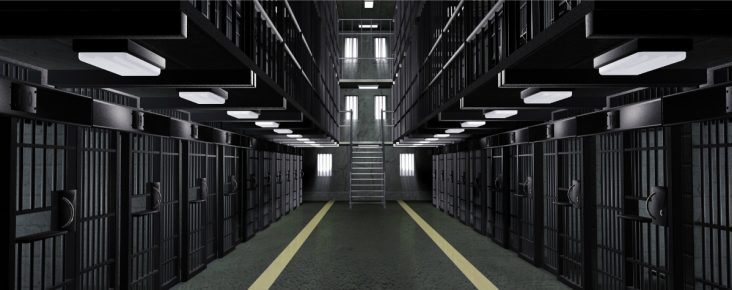Group trying to help Arkansas curb prison growth, looking at Texas model
by November 30, 2015 7:34 pm 395 views

The state of Arkansas will be working with the Council of State Governments Justice Center to try to reverse the growth of the nation’s fastest rising prison population from 2012-14.
Andy Barbee, research manager, told the Legislative Criminal Justice Oversight Task Force his organization will make Arkansas the 23rd state it has served through its Justice Reinvestment project. After studying criminal justice data, the Council will report its recommendations to the task force in late summer or early fall next year.
The Council agreed to work with Arkansas at the request of Gov. Asa Hutchinson, then-Chief Justice Jim Hannah, and legislative leaders. It is funded by a variety of organizations and will not be charging the state money for its efforts. The task force, which is composed of legislators, law enforcement officers and members of the judicial community, was created by legislation earlier this year to consider criminal justice reforms.
With 18,813 inmates, the state’s prison population has grown by almost 4,000 since 2013, when the population was 14,825. The increase between 2012 and 2014 was the fastest rise in the country, Barbee said. Arkansas’ incarceration rate is higher than all but two of its neighbors’, and it’s growing faster than all of them. The crime rate has dropped, but not as quickly as any of its neighbors, he said.
The state has far exceeded its prison capacity of 15,416 inmates, forcing it to house 2,500 inmates in county jails while renting space in Texas. At the rate it’s been growing, Barbee said the Council is conservatively estimating the population will grow to 25,448 by fiscal year 2025. The state’s recidivism rate has been rising at the same time.
Costs for the state’s current prison policies have grown and will continue to grow, Barbee said. The state spent $300 million on corrections in 2004 and is spending $512 million in 2015. If the growth rate doesn’t change, the state will pay $680 million to house excess prisoners in counties and other states by 2025. If it tries to increase capacity, at $60,000 per bed it would cost $602 million to build that much prison space, and the state would continue to pay for the cost of housing the other prisoners elsewhere while the prisons were being built.
Ken Casady, a Saline County-area prosecuting attorney and a member of the task force, questioned Barbee’s trend lines during the meeting and afterwards. He said Arkansas traditionally has had lower per capita incarceration rates than its neighbors. What’s happening now is a spike – and perhaps not a long-term trend – that came about as a result of needed reforms in the parole system after a parolee, Darrell Dennis, kidnapped and murdered a man two years ago.
Barbee told the task force that the state’s parolee population has grown 59% since 2004, while its probation rate has declined. Meanwhile, recidivism rates have increased by 11% over the last five years, from 37% to 48%. He said that 75% of Arkansans involved in the felony system are in the community – either pre-trial, on probation or on parole.
“There’s no way you can incarcerate all these individuals,” he said.
Other states with which the Council has worked have reduced their prison populations, including Texas, which has seen a dramatic drop in its inmate population – and crime rate – since it passed legislation in 2007. Barbee said Texas in 2007 had a half billion dollar construction package on the table. Instead, it spent a quarter of a billion dollars on community supervision programs, and its crime rate went down.
In a panel discussion hosted afterwards by The Coalition for Public Safety at the Clinton School of Public Service, one of the architects of Texas’ package, former Rep. Jerry Madden, said he had no experience in criminal justice when the speaker of the House asked him to take on the issue. He said the speaker, a conservative like him, said eight words that changed his life: “Don’t build new prisons. They cost too much.”
From there, Madden said he and other legislative leaders talked to thousands of people as they collected data and gained people’s perspectives. Programs that didn’t work were ended, while the state increased its efforts in areas such as alcohol treatment programs.
As the result of its efforts, Texas has reduced its prison population, closed three prisons, and reduced its crime rate to the lowest it has been since the 1960s, he said.
